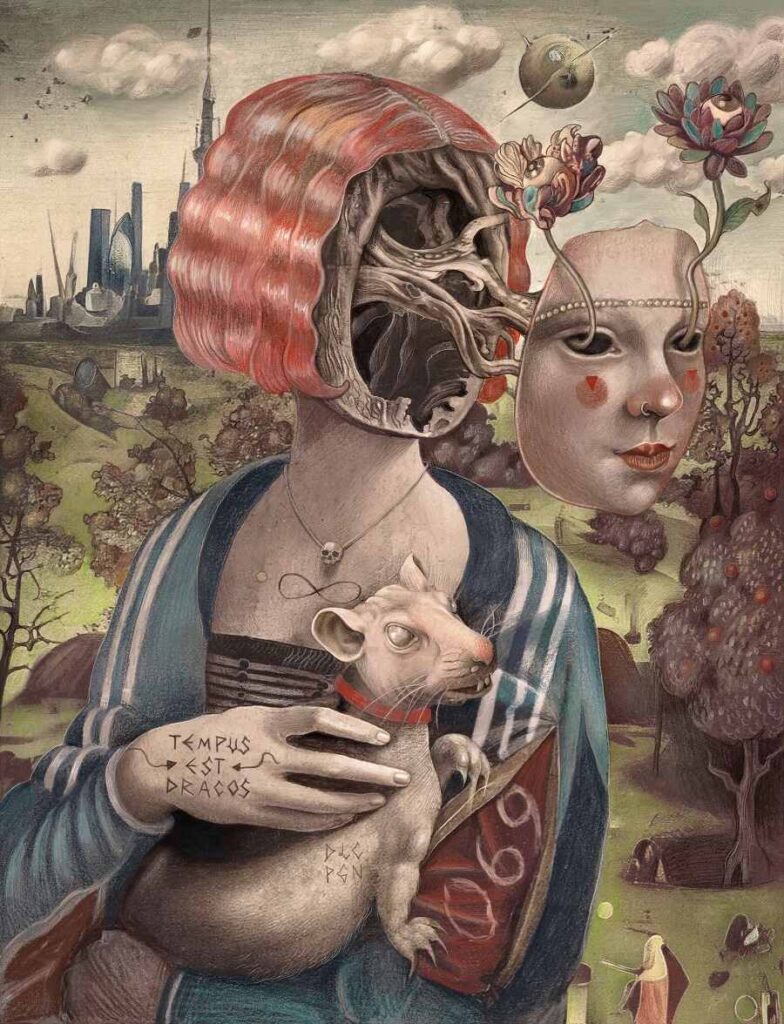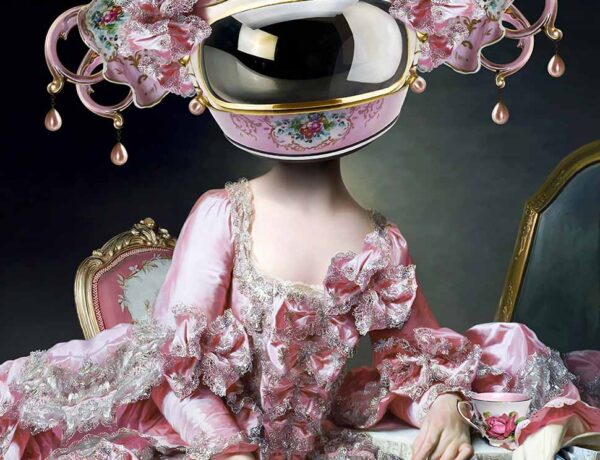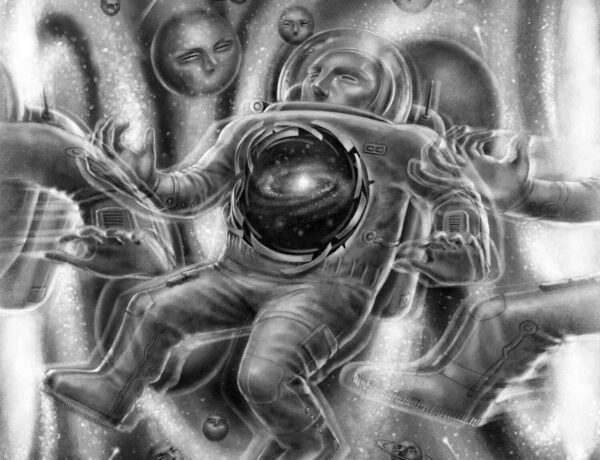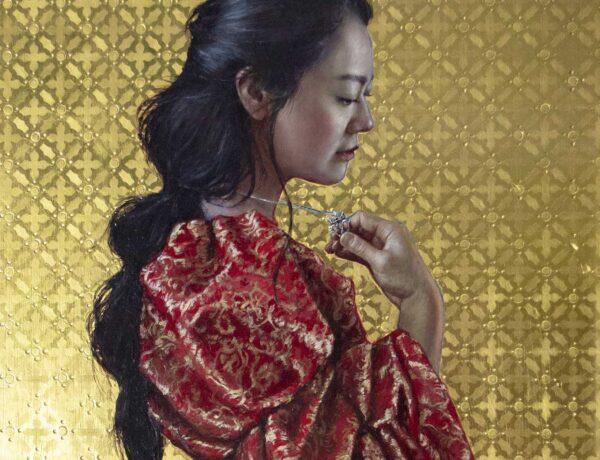The Quick Q & A editorial in Beautiful Bizarre Magazine is a much loved regular feature, in which we ask 5 artists the same 4 questions. In the 10th Anniversary December 2023 Issue 43, these were the Quick Q & A questions:
- How do you approach the challenge of creating a cohesive body of work?
- How do you balance the commercial aspects of being an artist with the creative part?
- Do you compare your work to your peers? How does this affect you/your practice?
- What are your goals and aspirations as an artist, and what do you hope to achieve with your work?
We feel that the artists’ responses provide such a valuable insight for our community of artists that we wanted to share one Quick Q & A response from each issue with you, going forward. The December 2023 Issue 43 print issue is sold out, but you can download the digital magazine via our webstore to read more. To ensure you never miss an issue again, you can also subscribe to Beautiful Bizarre Magazine, and have each issue sent straight to your door each quarter.
Excerpt from Issue 43 // December 2023 Quick Q & A editorial: Dolce Paganne, Mary Perkins, Brad Gunn, Marc Le Rest, and Raul Guerra all respond to the below Quick Q & A:
Quick Q & A: How do you balance the commercial aspects of being an artist with the creative part?
“As a former textile designer, I feel as though both these vocations have always worked well together. I have to remember that, at the end of every process, someone must be willing to go ahead with an acquisition. I liken it to riding a horse: on the one hand, I’m clutching onto my creative desires, but on the other, I have to embrace the need to sell my work. If I want my horse to travel in a straight line, I’m obliged to hold firmly onto both these needs and to maintain them in a perfect balance. Pursuing my creative desires too much can lead to sales issues. Conversely, excessively focusing on sales usually has a detrimental effect on my creativity.”


“Like most artists, I find this to be troubling and continues to be a constant conversation you have with yourself. Sometimes I have leant into making work which I think will sell and it often never does. I like to believe if you create solely for yourself it speaks to the viewer in more than just a visual sense and they feel the intention and magic you felt in that moment. People are smart and they know when you are pandering to them. Being an artist is like running a small business. You can easily get caught up in the promoting and exhibiting which can start to feel soul destroying. It’s only when I return to the studio do I remember why I do it.”
“I try to minimise the impact of commercial aspects on my work as much as possible. This can translate into working at a pace that is most comfortable for the level of quality that I want to be representative of my work. I limit my online presence and exposure to what is essential, and I have learnt to take the time necessary to do my work. The creative process, for me personally, requires time, isolation, and reflection. Although I know the commercial side to be essential, for me the creative and the commercial sides must go hand in hand. Honesty and authenticity is something I highly value, so I want my work to express my truth.”


“For 10 years I have made my living only with my art. Creating an exposure on social media, published media, and exhibitions kind of helped me in achieving this goal. It’s a crazy, beautiful thing that there are collectors out there who are striving to own your art. I almost never did commissions during this period except for some that perfectly fit my body of work, such as the one I did for M. Night Shyamalan’s movie or some editorial works. Marketing and PR are essential if you aim to make art your primary occupation, but I try not to involve my inner creative world with this commercial aspect. That’s totally another job; to separate these two aspects and focus my concentration fully on both individually helped me find a balance.”
“My art has long ceased to be just a hobby. Working part-time as an Art Director in an international company, I train new artists and check the work of the main artists. I always try to find time for my creativity, for my drawing. It is these drawings and illustrations that I then publish on Instagram, which gives me a great incentive for further creativity, to share with other people and the whole world my vision. At the same time, I always find time for private commercial orders, but due to having little free time I always choose only interesting projects and orders. I love creating covers for music albums and drawing prints for clothes. It’s an incredible feeling when you walk into a store and see your art!”





